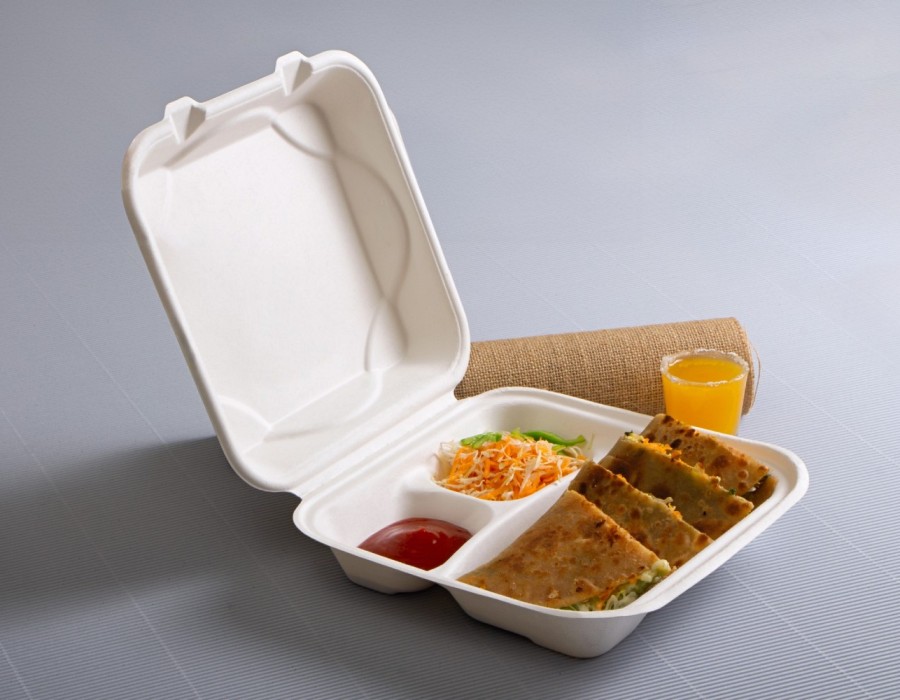Introduction
As businesses increasingly prioritize sustainability, the choice between sugarcane containers and traditional plastic packaging has become a critical decision. Both options have their advantages and disadvantages, but understanding which is better for your business requires a closer look at factors such as environmental impact, cost-effectiveness, and brand perception.
Environmental Impact: A Shift Towards Sustainability
Sugarcane containers offer a significant environmental advantage over traditional plastic. Made from the fibrous residue of sugarcane after juice extraction, these containers are not only biodegradable but also compostable. This means that after use, they break down naturally, returning nutrients to the soil without leaving harmful residues. In contrast, traditional plastic containers are derived from fossil fuels and can take hundreds of years to decompose, contributing to pollution and landfill overflow. For businesses aiming to reduce their carbon footprint and align with eco-friendly practices, sugarcane containers are a clear winner.
Cost-Effectiveness: Balancing Short-Term and Long-Term Costs
Cost is a crucial factor when choosing packaging materials. Traditionally, plastic has been the more affordable option due to its mass production and lower material costs. However, the rising costs of environmental impact and the increasing demand for sustainable alternatives are shifting this balance. While sugarcane containers may have a higher upfront cost, they can be more cost-effective in the long run. Businesses that invest in sustainable packaging may see benefits such as reduced waste management costs, eligibility for green certifications, and enhanced brand loyalty among eco-conscious consumers. Moreover, as the market for sugarcane containers grows, economies of scale are likely to reduce their cost further.
Brand Perception: Aligning with Consumer Values
In today's market, consumers are more informed and concerned about the environmental impact of their purchases. Companies that use sustainable packaging like sugarcane containers can appeal to this growing demographic, enhancing their brand reputation. Traditional plastic, on the other hand, is often associated with pollution and waste, which can negatively impact a brand's image. By choosing sugarcane containers, businesses can demonstrate their commitment to sustainability, potentially attracting more customers and setting themselves apart from competitors still relying on plastic.
Durability and Functionality: Meeting Practical Needs
One of the key considerations in packaging is its ability to protect and preserve products. Traditional plastic is known for its strength and versatility, making it a reliable option for various packaging needs. Sugarcane containers, however, have made significant strides in durability and functionality. They are sturdy, resistant to heat and moisture, and can be used for both hot and cold items. While plastic may still be the better choice for certain applications requiring extreme durability, sugarcane containers are increasingly viable for a wide range of products, particularly in the food and beverage industry.
Conclusion: Making the Right Choice for Your Business
When deciding between sugarcane containers and traditional plastic, businesses must consider their environmental goals, cost structure, and customer expectations. Sugarcane containers provide a sustainable alternative that aligns with modern consumer values and offers long-term benefits, including cost savings and enhanced brand image. While plastic may still be necessary for certain applications, the shift towards more eco-friendly options like sugarcane containers represents a forward-thinking approach that can benefit businesses in the years to come.





Comments